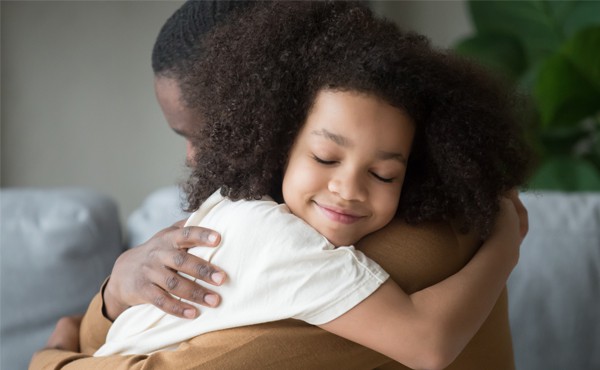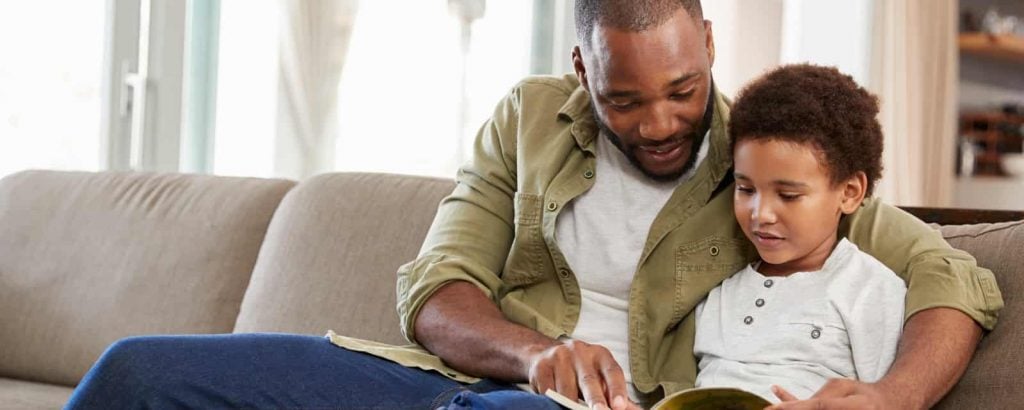Stress is unavoidable. Everyone experiences it at some point in their lives. But sometimes, the levels and length of the stress we experience can feel like it’s just too much. Dealing with the drastic effects of the COVID-19 pandemic and political unrest have cranked many people’s stress levels up to 11.
That goes for children, too. Adults can recognize when they’re stressed out and need help, but children might not know how to discuss or handle their feelings. Fortunately, simple activities and exercises can help them find relief. April is National Stress Awareness Month, so now is a good time to work on healthy ways to cope with stress.
Common Causes of Stress
Our children are likely feeling the effects of stress brought on by the COVID-19 pandemic. When we think about all that children have been through over the past year, it’s easy to understand why they might be feeling stressed out.
Most children have had to deal with an abrupt school closure and quick shift to at-home learning. They’ve been physically distanced from friends and extended family. Some may have had to cope with sick relatives, a caregiver’s job loss, or other worries.[5]
This is not to mention the regular everyday stressors children face: difficulties at school, playground politics, or changes to the family dynamic.
It’s also important to give children the opportunity to express why they are stressed themselves. This can help them identify stressors and learn to communicate their emotions. Plus, they may be feeling stress for completely different reasons than we assume.
Recognizing Symptoms of Stress in Children
Your children may not want or be able to express themselves if they are feeling stressed out. A stressed child might exhibit physical or emotional symptoms, however, which can alert you to their distress.
Physical signs of stress can be:
- Changes to appetite
- Nightmares
- Bedwetting or sleep disturbances
- Other physical symptoms with no illness[1]
Emotional signs of stress can be:
- Anxiety
- Clinginess
- New or recurring fears
- Not wanting to participate in activities[1]
10 Stress Relief Activities and Exercises to Help Children Cope
While you can’t eliminate all the causes of stress your children might face, you can still help them cope. Fortunately, the remedy to unhealthy levels of stress is often simple: security, love, and physical and mindful activities.
Here are 10 creative ways to reduce stress that can work for children or adults.
1. Use Routines to Create Comfort
One of the first things families can do is to make sure your child’s home is safe, secure, loving, and dependable. An effective way to do this is by creating routines.
Routines are comforting to children, so ensuring regular schedules and activities can help ease stress. Major changes are sometimes unavoidable, so be sure to calmly keep your children informed of any big life events.[1]
2. Be Aware of Media Children Consume
Even worrying news reports on a television playing in the background can cause stress in children, especially during times of heightened tension in the country. Sometimes it’s best to take a break from the news until your child feels less overwhelmed.[6]
3. Be a Good Role Model
Children also look to their parents or guardians to be models, so be sure to work on healthy stress management yourself.[1] These 30 mindfulness exercises especially for families can help you get started.
4. Get Moving
You don’t need to break a sweat to feel better. Here’s a fun book about the benefits of exercise you can read with your child.
A simple walk in the sun can do wonders for releasing endorphins and serotonin (another mood-lifting hormone our bodies produce naturally).[3] National Walking Day is April 7 this year, so what better day to lace up the sneakers and enjoy the spring?
5. Get Mindful
If the weather is bad, indoor natural stress relief exercises can include yoga or other mindfulness exercises.
6. Talk About Your Feelings and Listen
Talking with others is a healthy and effective way to cope with stress. Talking with trusted grownups who take the time to listen to them can help a child make sense of confusing situations and feelings.[6]
7. Practice Journaling and Artistic Expression
Keeping a journal is a good way for children to express their feelings. Encourage older children to write about how they feel. Younger children can draw if they’re not able to read or write yet. Here’s a printable journal page your children can use for writing or drawing. This can help them cope with stressful situations.
Another form of expression is music. Let children listen to, create, or dance to music to encourage emotional release or relaxation.[8]
8. Read a Story Together
Children’s books and stories can help your children relate to characters who might be going through a rough situation. Some stories like the classic Alexander and the Terrible, Horrible, No Good, Very Bad Day are good ways to vicariously deal with rough situations.[8]
Here are some more free books you can read with your children where the characters deal with tough times;
- Moving Day: A young boy copes after his best friend moves away.
- The Ugly Duckling: A classic fairy tale about a young duckling who just doesn’t fit in.
- Bad News Shoes: Sometimes children don’t get what they want, and that can be upsetting.
9. Get Good Sleep
Getting plenty of sleep is essential to physical and mental health. High stress can disrupt sleep patterns, so it’s important to work diligently to keep sleep on track.
How much sleep your child needs varies, but general guidelines from the CDC recommend that:
- Toddlers 1-2 years old sleep 11-14 per 24 hours (this can include naps)
- Preschoolers 3-5 years old sleep 10-13 hours
- 6-12 year-olds sleep 9-12 hours
- Teenagers sleep 8-10 hours[9]
Ways to build or maintain a consistent sleep routine include keeping consistent bedtimes and avoiding screen time for at least 30 minutes before bed. Getting plenty of physical and outside activity during the day also helps the body be ready for sleep at night.[7]
10. Just Be There
One of the best ways to create a secure and comforting environment is just to spend time relaxing with your children.[1] This helps create those important feelings of security and bonding.
When to Seek Professional Help or Support
Sometimes, stress can last so long or be so overwhelming that professional help might be required. If your child doesn’t tell you the source of their stress, or their symptoms are worsening, you should contact your pediatrician or family doctor. They can help you get in touch with a trained specialist who specializes in helping children cope with stress.[4]
Sources:
- National Institutes of Health. “Stress in childhood.” Medline Plus. https://medlineplus.gov/ency/article/002059.htm
- Anxiety & Depression Association of America. “Physical Activity Reduces Stress.” https://adaa.org/understanding-anxiety/related-illnesses/other-related-conditions/stress/physical-activity-reduces-st
- “What are the Benefits of Sunlight?” Healthline.com. https://www.healthline.com/health/depression/benefits-sunlight
- Boys & Girls Club of America. “Is My Child OK? Warning Signs Kids and Teens are Stressed About COVID-19.” June 2020. https://www.bgca.org/news-stories/2020/June/Warning-Signs-Kids-and-Teens-are-Stressed-and-How-to-Help
- Centers for Disease Control. “Children and Young People’s Social, Emotional, and Mental Health” December 2020. https://www.cdc.gov/coronavirus/2019-ncov/daily-life-coping/parental-resource-kit/index.html
- Centers for Disease Control. “Coping With Stress.” https://www.cdc.gov/violenceprevention/about/copingwith-stresstips.html
- Cedars Sinai. “Good Sleep in Times of Stress.” September 2020. https://www.cedars-sinai.org/blog/sleep-stress.html
- PennState Extension. “Stress Busting Activities for Young Children.” https://extension.psu.edu/programs/betterkidcare/knowledge-areas/environment-curriculum/activities/all-activities/stress-busting-activities-for-young-children
- Centers for Disease Control and Prevention. “How Much Sleep Do I Need?” https://www.cdc.gov/sleep/about_sleep/how_much_sleep.html

